Apple iPhone 12 Pro Max review: the best camera and display on an iPhone
We may earn a commission if you make a purchase from the links on this page.
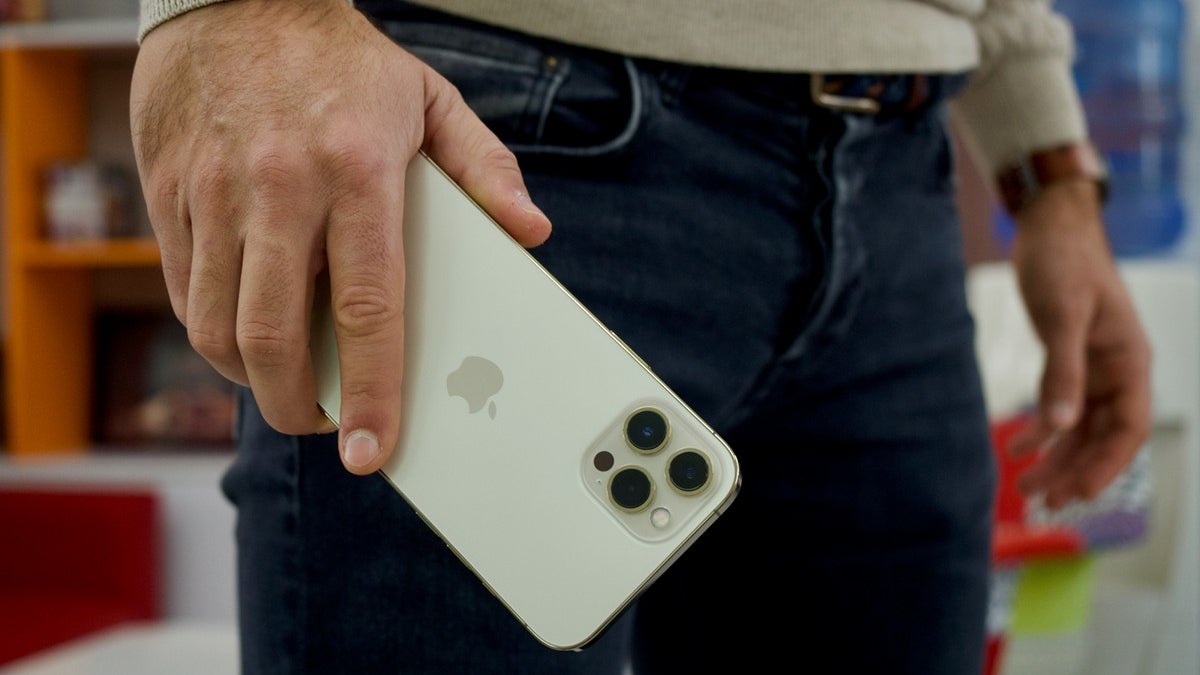
Wasn't Apple's "leap" year supposed to be all about the return to the smaller iPhone form factor? What with the 4.7" iPhone SE 2020 and brand new 5.4" iPhone 12 mini screen diagonal? Why did Apple's cottage rumor industry nail it then as the team from Cupertino indeed outed its largest iPhone ever, the 6.7" 12 Pro Max?
Well, with an iPhone in each of the sweet spots along that two inch screen diagonal range, Apple is planning to put an iPhone in every palm and every purse as its Services business that includes the App Store as well as Apple TV+, Arcade or Music, is the fastest growing and most profitable one.
At first blush, Apple took the high road and didn't increase the starting price of the iPhone 12 Pro Max, despite doubling the base storage, adding 5G connectivity, and slapping the best camera on an iPhone as a 12 Pro Max exclusive. Was it concerned that the Pro models are already borderline expensive, or did it make smart specs cuts to keep the profit margin intact? Check out our full iPhone 12 Pro Max review to find out...
In the iPhone 12 Pro box: USB-C-to-Lightning cable, SIM tray ejector, warranty and quick info leaflets, NO charger or EarPods.
iPhone 12 Pro Max display size, colors and design features
It's the 12 Pro Max, yo, so Apple wants you to skip the BBB (big blocky body) and go straight for the HDR display and the record drop/waterproof ratings
Unpopular opinion - no, the iPhone 12 Pro Max isn't too big, it's just bigger than the 11 Pro Max. For all the brouhaha around the first 6.7" iPhone release, and how it would affect your palm, pocket or purse, the 12 Pro Max is still a good deal more compact than the true juggernauts out there like the Galaxy Note 20 Ultra.
It is, however, wider, and Apple's return to the iPhone 4 design era with retro flat sides and screen cover glass makes the iPhone 12 Pro Max one blocky and borderline unwieldy proposition in your palm, exacerbated by its "best" in class heft.
Slap a case on it, and the iPhone 12 Pro Max, albeit stockier than Samsung's flagships, feels positively gigantic in the hand. It's alright, the cool kids are buying it, and they all carry little purses where the 12 Pro Max can share the space with a tiny dog. We kid, but the blocky, heavy slab of a phone, the relatively wide bezels, the unwieldy protrusion of the top one and the big glossy camera island sticking out of the two-tone rear aren't doing Apple's design team any favors.
Still, it's the iPhone 12 Pro Max, people, so nobody would care, and some even appreciate the "back to the roots" flat sides forced by the 5G antennas alongside with a small elliptical cutout on the side for the mmWave ones on the US models. In short, the 2020 iPhone models are certainly safe from being included in any future Apple design history book but what they lack in exclusivity they make up in functionality, and the 12 Pro Max is no exception.
iPhone 12 Pro Max Ceramic Shield display durability and drop protection
As usual, Apple partnered with its "made in America" investment darlings from Corning to cough up an exclusive version of Gorilla Glass Victus that it called Ceramic Shield, and, true to its name, the new blend has been proven to withstand higher drops without shattering in controlled drop tests.

The iPhone 12 Pro Max record water-resistance rating
That's not the only functional and tangible design improvement of the iPhone 12 Pro Max vs 11 Pro Max, though, as Apple also now uses sealing gaskets instead of just adhesive on more of the phone's outer openings like the loudspeaker and earpiece to introduce a record water resistance. The phone is still rated at IP68 but the standard's minimum requirements have been surpassed above and beyond the extra mile, so to speak.
You see, the IP68 standard requires the device to withstand being submerged in at least five feet of water (and water only) for at least half an hour. The iPhone 11 Pro Max went way ahead of that requirement with up to 13 feet depth certification, but the 12 Pro Max and all the 2020 iPhone range are now rated to last at least 30 minutes in up to the whopping 20 FEET depth. No other general purpose phone does that, at least not in the official specs lists, so Apple is setting another record with its new iPhone 12 series. Cue the legends of the "iPhone sleeping with the fishes" for days on end.
iPhone 12 Pro Max screen quality
The iPhone 12 Pro Max has one of the best displays in its class by all objective measures save for the run-of-the-mill 60Hz refresh rate. Shocker, we know. Seriously, Apple has once again outdone itself with one of the best display calibrations on the industry. It is just this year that Android phones started to employ production unit-based display calibration thanks to the OnePlus or Oppo partnership with the display specialists from Pixelworks but those guys have also worked with Apple, and it has been putting an emphasis on its iPhone screens' color presentation since forever, and the 12 Pro Max is no exception. Its 6.7" 1284x2778 pixels display has excellent density, and uniform brightness that peaks at the whopping 1200nits making it easy to discern outdoors. The color presentation is also spot-on with near-perfect white balance and standard gamut coverage.
To top it all off, the "Super Retina XDR display" covers the wide DCI-P3 color gamut and is HDR certified to show the Dolby Vision video recording that the iPhone 12 series is uniquely positioned to capture thanks to its powerful image processing graphics subsystem. The lack of high 120Hz or even 90Hz refresh rate on a $1000+ phone in and of itself, however, is knocking a few whole points off an otherwise excellent panel.
The new iPhone 12 Pro Max new camera features - night, portrait and zoom samples quality
Best camera on an iPhone by far
We've come to the best part, the largest camera sensor Apple has ever put in an iPhone, and it's on the 12 Pro Max, setting it apart from the 12 Pro. While the rumors are that the iPhone 13 will get the iPhone 12 Pro Max sensor in 2021, that won't happen before next fall, so if you want the best camera hardware on an iPhone, you got to get the 12 Pro Max. Is it really that good? Check it out.
| Cameras | iPhone 12 Pro Max | iPhone 12 / Pro / Mini |
|---|---|---|
| Main Camera | 12MP sensor, 26mm 7P lens, f/1.6 aperture, sensor-shift stabilization | 12MP sensor, 26mm 7P lens, f/1.6 aperture, OIS |
| Ultra-wide Camera | 12MP sensor, 13mm lens, f/2.4 aperture | 12MP sensor, 13mm lens, f/2.4 aperture |
| Telephoto Camera | 12MP sensor, 2.5X zoom, 65mm lens, f/2.2 aperture, OIS | *12MP sensor, 2X zoom, 52mm lens, f/2.0 aperture, OIS (*only on Pro) |
| Others | LiDAR sensor | LiDAR on the 12 Pro |
Apart from being just a much larger size, the biggest difference that sets the iPhone 12 Pro Max apart from the other new iPhones is the camera system. The cameras on the 12 Pro Max are more capable, and they are physically larger, with bigger sensors and the lenses protrude more out of the back of the phone. It seems that it would have been physically harder for Apple to include this camera system in the smaller iPhones, hence it’s only available on the Max.
So… what’s new? You have a 3-lens camera system: the main camera, the ultra-wide and now, a 2.5X zoom telephoto lens, slightly longer than the 2X zoom we have on the 12 Pro and earlier iPhones. And you also have a LiDAR sensor on board too.
Let’s get the ultrawide one out of the way first: it is the same 12MP camera as on the other new iPhones, no difference. If you compare it against last year’s iPhone 11 series, however, you would notice that Apple has done some tune ups to the software so photos don’t distort that much towards the edges and images look better because of this. It now also supports Night Mode, in fact all cameras on the iPhone 12 series now support Night Mode, a welcome improvement.
The main camera is the one that has seen probably the biggest change. It’s physically bigger, the sensor is nearly 50% larger than on the other iPhones, and coupled with the same 26mm f/1.6 lens as on the other phones, it can capture a lot more light and cleaner photos with less noise. At night, this also means that it uses shorter exposures with less noise and gets less blurry details. Does this also mean that photos during the day are better? Not quite. It’s really hard to spot much of a difference between the Pro Max and the other new iPhones, colors look the same, dynamic range is mostly the same and while there are occasionally some slight differences, they are barely noticeable.
The advantages are really best seen when taking photos indoors or in low light. Apart from the larger sensor, the Pro Max is also the first iPhone to use “sensor-shift” stabilization instead of the traditional lens-only optical image stabilization. What this means is that the whole sensor moves to counter vibrations, instead of just moving the lens as the other phones do. This new stabilization is slightly better than traditional OIS at minimizing different types of vibrations and hand tremor, as per Apple. Finally, the Max also supports higher ISO: it can go up to 7616 ISO, while the 12 maxes out at 5808, and last year’s 11 Pro Max can go up to 3072. This higher ISO means that you can shoot in the dark with faster speeds, and get cleaner photos.
So let’s take a look at a few photos. During the day, it’s hard to notice much of a difference between the iPhone 12 Pro Max and the other iPhone 12 phones.
Indoors, you start to notice that the Max has a bit of an advantage over the other iPhones, even the 2020 crop:
The other thing that’s changed is the zoom camera, which now goes to 2.5X zoom, slightly longer than before. The jump to this slightly longer lens gives you a closer view of people, which makes for beautiful portraits. And with the LiDAR sensor on board, you can easily acquire focus in low light where previously iPhones struggled.
Let’s get the ultrawide one out of the way first: it is the same 12MP camera as on the other new iPhones, no difference. If you compare it against last year’s iPhone 11 series, however, you would notice that Apple has done some tune ups to the software so photos don’t distort that much towards the edges and images look better because of this. It now also supports Night Mode, in fact all cameras on the iPhone 12 series now support Night Mode, a welcome improvement.
The main camera is the one that has seen probably the biggest change. It’s physically bigger, the sensor is nearly 50% larger than on the other iPhones, and coupled with the same 26mm f/1.6 lens as on the other phones, it can capture a lot more light and cleaner photos with less noise. At night, this also means that it uses shorter exposures with less noise and gets less blurry details. Does this also mean that photos during the day are better? Not quite. It’s really hard to spot much of a difference between the Pro Max and the other new iPhones, colors look the same, dynamic range is mostly the same and while there are occasionally some slight differences, they are barely noticeable.
The advantages are really best seen when taking photos indoors or in low light. Apart from the larger sensor, the Pro Max is also the first iPhone to use “sensor-shift” stabilization instead of the traditional lens-only optical image stabilization. What this means is that the whole sensor moves to counter vibrations, instead of just moving the lens as the other phones do. This new stabilization is slightly better than traditional OIS at minimizing different types of vibrations and hand tremor, as per Apple. Finally, the Max also supports higher ISO: it can go up to 7616 ISO, while the 12 maxes out at 5808, and last year’s 11 Pro Max can go up to 3072. This higher ISO means that you can shoot in the dark with faster speeds, and get cleaner photos.
Indoors, you start to notice that the Max has a bit of an advantage over the other iPhones, even the 2020 crop:
The other thing that’s changed is the zoom camera, which now goes to 2.5X zoom, slightly longer than before. The jump to this slightly longer lens gives you a closer view of people, which makes for beautiful portraits. And with the LiDAR sensor on board, you can easily acquire focus in low light where previously iPhones struggled.
Last but not least, the iPhone 12 series is able to record Dolby Vision video, the highest 12-bit color HDR standard, and in 4K definition at that. No other phone does that, as, thanks to the processing power of the A14 chipset, the iPhones can now go through the vast stream of bits and bytes in time to churn out the impressive footage that was until recently a prerogative of expensive professional camera rigs.
As you can expect, the iPhone 12 Pro Max video samples are second to none, what with the bigger sensor collecting more light, the sensor-level OIS, and the 12-bit Dolby Vision HDR recording that churns out incredible tone mapping. You'd still need a suitable TV or monitor to watch the footage in its full glory, but just knowing that's what you phone can do is enough to warm you inside, or you can simply watch the videos on the 12 Pro Max's XDR display.
iPhone 12 Pro Max A14 processing performance and 5G network support
5G AND 120Hz on an iPhone Pro Max? In '21, yo, but the A14 chipset and 5G bands are '23 level of futureproof
Apple analysts advise that the nascent state of the both the 5G cell modem architecture and the high refresh rate displays with LTPO technology mean that they are both still giant battery hogs. In short, Apple had to choose between 5G or dynamic display refresh rate if it didn't want a thorough design rework to fit in much larger batteries, and, quite explicably, it chose 5G. Thanks to its now-settled patent fights with Qualcomm, Apple was already a year behind Samsung, Huawei, and the rest of the Android competition in introducing an 5G iPhone, so another year would have been a PR disaster regardless of the state of the US 5G networks.
As if to compensate for the delay, the iPhone 12 models now support the richest number of 5G bands of any phone, and they are even futureproof when it comes to the C-bands that Verizon or AT&T plan to expand their 5G networks on going forward. Heck, the US iPhone 12 models even have a tiny mysterious cutout on the sides to accommodate the tailored mmWave antenna needed to access the Ultrawide Band (UWB) 5G network that the likes of Verizon have bet on from the onset.
Update: iOS 17 was announced at WWDC'23 with multiple improvements to some core iOS features.
As far as Apple's new A14 chipset on iOS 14 performance goes, we have little to add than the fact that it is the first 5nm chipset clocking record benchmark scores, passing the 3GHz mark, etc. The iPhone 12 Pro Max runs smooth as silk on it, despite the extra animations and widgets pizzazz that Apple finally adorned iOS 14 with. Heck, a souped-up version of the A14 is now running on the new MacBook Air and even the MacBook Pro, so you can imagine how Apple had to leash it for phones.
When the A14 has to go peak image rendering speeds, however, we noticed that the graphics subsystem is not optimized for certain tasks, or vice versa, so in our 3D gaming test the iPhone 12 Pro Max got hot and bothered and battery-killing with certain titles like the simple Minecraft, while with others arguably more complex ones like CoD it performed well and stayed cool under pressure. Overall, however, it's the best mobile chipset currently available, as you can see from our benchmark tests above, and the 6GB RAM that Apple spared for the 12 Pro Max felt more than enough to load whatever the App Store threw at them.
iPhone 12 Pro Max battery life and 20W vs 18W charger speeds
Battery life stasis, slow charging and NO charger
To fit the 5G modem, interference filters and antennas, however, Apple had to rework the innards and, unfortunately, pass on any potential battery size increase. Thankfully, the 6.7" handset is large enough to accommodate a battery capacity similar to what the iPhone 11 Pro Max offers, and that one fares very well in terms of endurance.
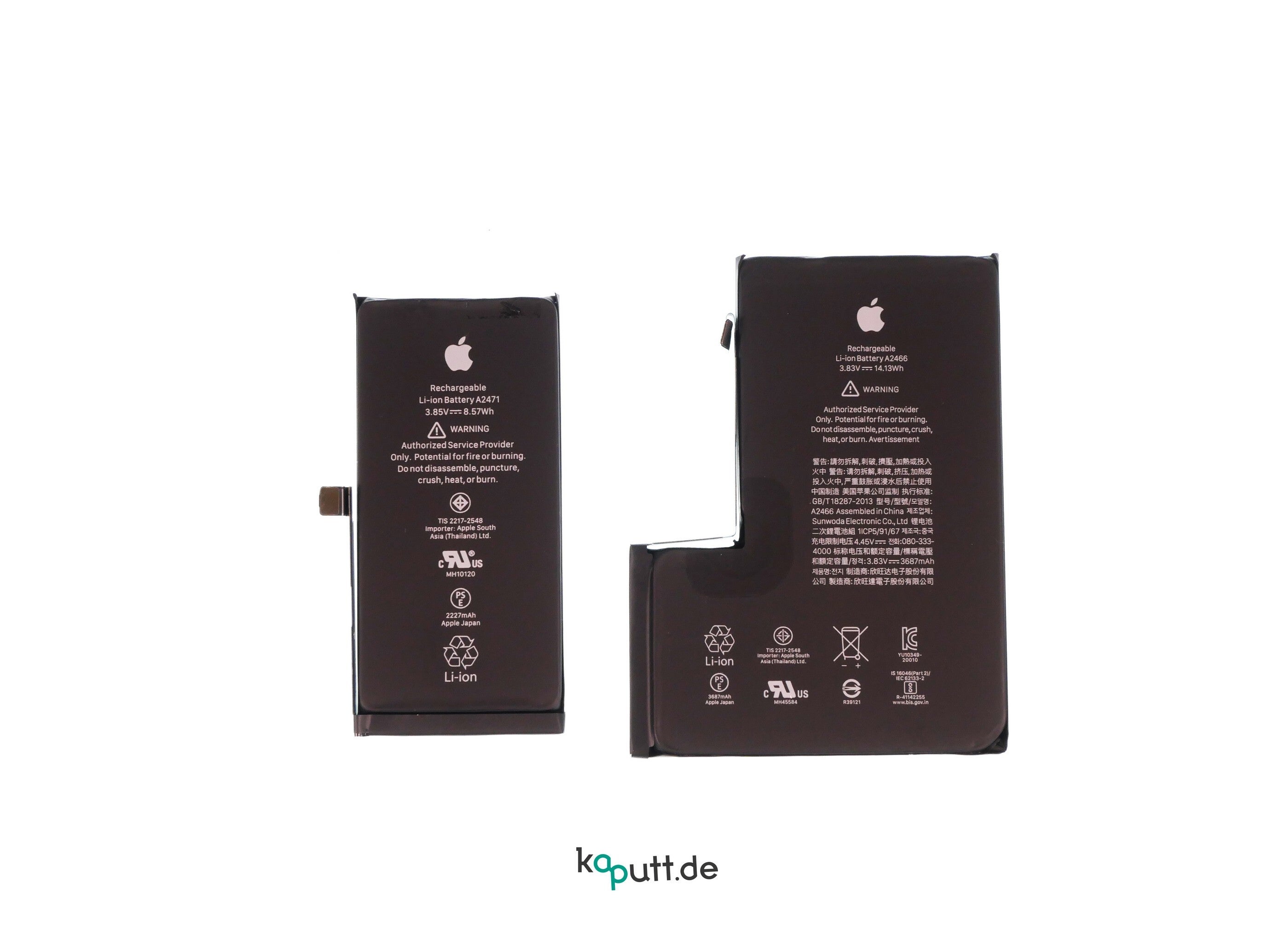
From 2227mAh on 12 mini, to 3687mAh on the 12 Pro Max, that's the sorry range of the 2020 iPhones battery capacity
Official iPhone 12 Pro Max vs iPhone 11 Pro Max battery life and capacity numbers:
- 14.13Wh vs 15.04Wh (about a 6% decrease in battery capacity)
- 20 hours of video, 80 hours of audio playback
Regardless of whether Apple chooses to list the typical or rated capacity on its iPhone batteries, it's evident that the iPhone 12 Pro Max has a smaller 3687mAh pack than what's in the iPhone 11 Pro Max, and yet Apple lists the same battery life on a charge, capitalizing on the frugal 5nm chipset.
iPhone 12 Pro Max: YouTube Video Streaming Battery Test
Watching videos on YouTube is a favorite pastime for many, and YouTube can easily replace TV for some people, so this test is a very good indication about the battery life you can expect out of the new iPhone 12 Pro Max in real life.
iPhones are traditionally not very good performers on this test, but recently some Android phones have lost ground. For example, the Note 20 Ultra did surprisingly poorly on this test, scoring just 7 hours, less than the iPhone 12 Pro Max. The earlier S20 Ultra model, however, had the iPhone beat with a score of 10 hours and 29 minutes. Don't forget that you can also add your favorite phone to this chart and see how it performed on this test, chances are high that we have tested it!
iPhone 12 Pro Max: Web Browsing Battery Test
Despite the smaller-sized battery compared to last year's iPhone 11 Pro Max, the new 12 Pro Max managed to outlast it by a small, but not insignificant margin. The new 12 Pro Max lasted an impressive 14 hours and 6 minutes on our web browsing test. This test is the lightest one that we run and it's a good representation of how your phone will hold up for just basic everyday tasks like browsing the web and scrolling around.
iPhone 12 Pro Max: 3D Gaming Battery Test
If you've read our iPhone 12 and iPhone 12 Pro battery test, as well as our iPhone 12 Mini battery test, you already know that the lastest iPhones fail our 3D gaming battery benchmark spectacularly, so it won't be a surprise for you to know that the iPhone 12 Pro Max did just as poorly as the rest of the phones. The phone started to heat up unlike any other phone we have tested and the battery was melting as fast as pistachio ice cream in the summer heat.
Yes, the Pro Max lasts a big longer than the other three new iPhones simply because it has a larger battery, but its score is abnormally low. Fret not, however, gamers, as this abysmal performance seems to be in games that are not really optimized towards the A14 (cough, Minecraft, cough) and which have shown many a weird battery draw before. Duking it out on CoD, for instance, has the 12 Pro Max perform as it should, no overheating or sustained peak frequencies that demolish the 12 Pro Max battery capacity.
In a nutshell about the iPhone 12 Pro Max battery life, if you leave 5G streaming constantly on and engage in heavy gaming sessions, you'll quickly spot a hit to battery life, as can be expected. If Apple had added 120Hz refresh rate, it would be a battery massacre indeed. Perhaps Apple added a Hail Mary fast charging speed to offset the 5G/graphics drain?
Not really, as it simply took away the 18W charger that was present in the 11 Pro Max box, slimmed the box, yet didn't feel the need to grace the relatively large 12 Pro Max battery with charging speeds faster than what its new 20W brick can provide.
Charging Speeds
iPhone 12 Pro Max charging speeds with 20W/18W Apple adapter:
- 23% in 15 minutes
- 48% in 30 minutes
- 69% in 45 minutes
- 82% in 1 hour
- 100% in 1 hour 55 minutes
If you are wondering how long does it take to charge the iPhone 12 Pro Max battery with either the new 20W charger you have to buy separately, or with the old 18W one you may have lying around, there is basically only a few minutes difference towards the end of the charging session, so you may as well stick to what you have. Sad.
Follow us on Google News

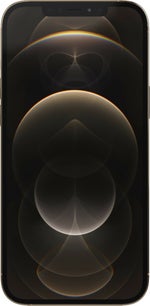
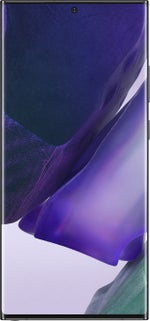
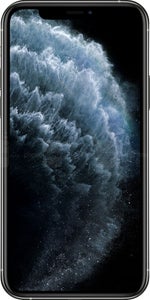
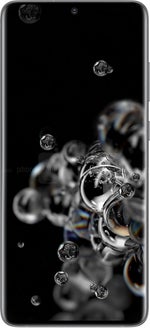
























![Some T-Mobile users might be paying more starting in March [UPDATED]](https://m-cdn.phonearena.com/images/article/176781-wide-two_350/Some-T-Mobile-users-might-be-paying-more-starting-in-March-UPDATED.webp)





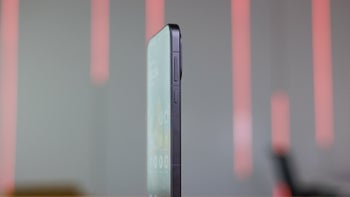
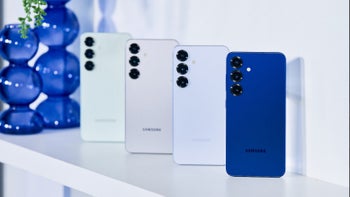

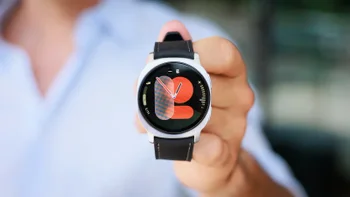
Things that are NOT allowed:
To help keep our community safe and free from spam, we apply temporary limits to newly created accounts: